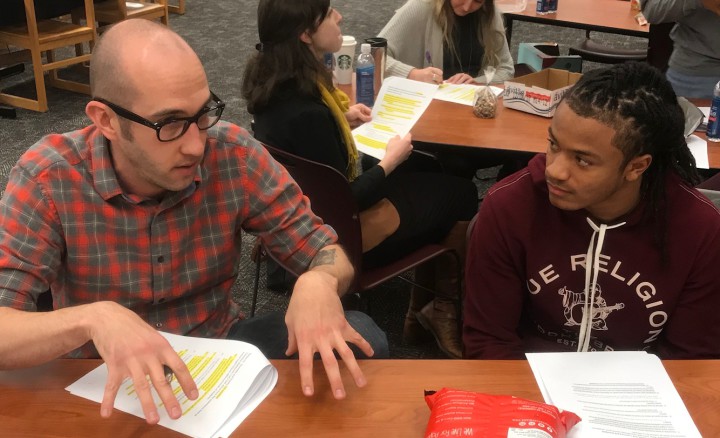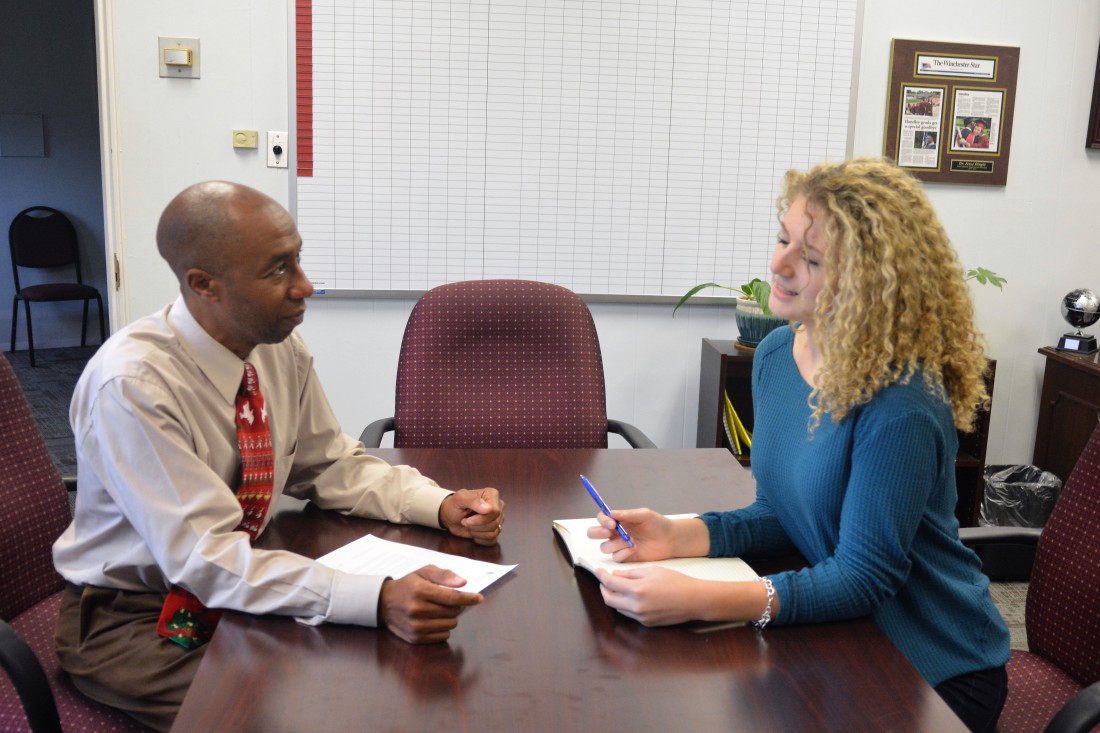Sometimes the best way to achieve innovation is a good brainstorming session.
That’s the premise behind The Listening Project at the city’s two high schools, a project similar to the one at the city’s middle school a decade ago that led to the highly successful after-school program, In Real Life (see “Too Cool for School,” Xpress, Nov. 5).
Asheville High School, which has 996 students enrolled currently, and the School of Inquiry and Life Sciences, with 378 students enrolled, are both located on the same historic campus at 419 McDowell St.
“We have no idea what the results of this listening project will be,” says Kate Pett, a former teacher and executive director of the Asheville City Schools Foundation.
Part of the reason for doing this now is that Asheville High has a new principal, Jesse Dingle, who came to Asheville from Arlington, Va., where he headed the largest high school in the state.
“We’ve had turnover in leadership at the high school and we wanted to know how we might help Dr. Dingle to get established here,” Pett explains.
Hearing voices
Dingle says his first priority on arriving at the school was to open his doors to staff and members of the community. But he felt the student voice was missing, and when he heard about the listening project, he was enthusiastic immediately.
“I liked what happened at the middle school, and you know, middle schoolers come to us eventually, so why wouldn’t we reach out to talk to students? All the stakeholders need to be in the room.”
For the project, a group of trained listeners will interview 100 students about what’s important to them, what might help them get the most out of their high school experience and how they envision their school in the future. Each session will consist of 25 questions broken down into four sections: student goals and successes, classroom experience and academic success, student supports, and race and equity (see sidebar, “Going deep”).
Miranda Musiker, director of grants and scholarships for the foundation, hopes to interview parents later, but the current project is just for students, and to make certain their comments are honest and open, all of the interviews are confidential.
More than 50 volunteer listeners — parents, teachers, students and members of the community — have been trained for the project. The training involves listening skills and how to work across cultural differences and differing perspectives. That alone, says Pett, is a good way to increase understanding (see sidebar, “Learning to listen”).
“This is a full community effort,” Pett says. “And with the community involved in the process, that increases the odds that the community will buy in and work together.” Including staff from the Asheville City Schools, foundation staff and volunteers, nearly 250 people are expected to dedicate a total of over 2,000 hours.
Why not ask the kids?
Asheville High history teacher Lizzie Rogers is excited about what might come of the project, in part because it will be unique to the school.
“We have tried so many different projects, but these new initiatives will be specific to our school and our school’s needs,” she says. “I am hopeful here solutions will be creative and not just some canned program for purchase. Our student body is incredibly talented and bring many gifts to the table.”

“Kids have been excited to be heard and to give their input about how to improve the school,” says SILSA senior Dana Campbell, who volunteered to both give his input and listen to other students. He’d like to see the school do more to let students know of services available on campus. “Mental health services and things like that,” he explains. “A lot of kids don’t know where to get those services. If we made that more public and not as hidden, maybe kids would feel more comfortable going up there.”
Campbell, who’s received offers of admission from several colleges for next year, says he’s known many students who wanted to do well in academics “but didn’t have the support to keep them on track.” He hopes the listening project will lead to more support for both students and staff.
Of course not all the concerns Campbell and other students are sharing are as weighty. Case in point: lunch period. With less than 20 minutes allotted for lunch in the current academic year, Campbell says, “I’m not the type that likes to devour my food. I prefer to take my time to eat. It’s not enough time for both eating and socializing.”
Turning input into action
Once the interviews are complete, the results will be gathered and transcribed by sociology students at UNC Asheville and then quantified. For example, Musiker says, students’ replies when asked what one person makes school work for them can be broken down into percentages of students who say a teacher, the principal, a school counselor, etc. The results then can be analyzed further by focus groups.
If a large percentage of students identify a certain need, that can be addressed, Musiker says. It was students’ identification of the need for something to do after school at the middle school that led to the current In Real Life program.
“It’s just so obvious that kids know what schools need,” Pett says. “When you talk about what schools need, most people think about school supplies — notebooks, pens, backpacks — but what about a second breakfast or tutoring help?”
This is a community project, Pett says, and the more people who are involved, the more likely the community will be willing to provide the resources needed to address the issues that come up.
“I believe the resources are out there,” Pett says. “As it happened with the middle school, it’s about setting priorities.”
Results of the interviews should be tabulated before the end of the current school year, Pett says. Then the community can move on to deciding how to address the needs.
Building equity
The students taking part in the project were identified by teachers, who sought students who exemplified the diversity in the student body — people of color, LGBTQ students, athletes and artists, among others. According to school system spokesperson Ashley-Michelle Thublin, 67 percent of students at Asheville High are white, 19 percent are African-American, 7 percent are Hispanic and 7 percent identify as belonging to other groups. At SILSA, 68 percent of students are white, 17 percent are African-American, 9 percent are Hispanic and 6 percent are other ethnicities.
In addition to the listening project, the foundation is convening other efforts aimed at narrowing the yawning achievement gap between white and black students in the Asheville City Schools (see “Closing the Gap,” Xpress, March 22, avl.mx/4f3), Musiker says. Upcoming events that are open to the public include:
- Tuesday, Jan. 30, “Legacy of desegregation in ACS,” a community discussion featuring stories from those impacted by desegregation in Asheville.
- Wednesday, Feb. 28, “Increasing equity through full integration,” with Nikole Hannah-Jones, a reporter who covers racial injustice for The New York Times Magazine.
- Thursday, March 22, “Promoting equity today,” an information session for parents on equity work underway in the schools and how they can support it.
- Thursday, April 19, “Becoming an equity advocate,” a workshop for members of the school community.
For more information about these events and other initiatives, visit acsf.org.
“You know, the old adage of ‘it takes a village…’, it’s kind of worn out, but it applies here,” Dingle says. “I think it’s really neat that students, who have a fresh perspective, are part of this.”






Have the students complained about the wasted MILLIONS of taxpayer $$$ to fund and operate TWO antiquated screwl systems in Dumbcombe County ?
WHY must the taxpayers be FORCED to operate to DIVISIVE screwl systems ? Where is that ‘ALL ONE’ mentality for maximum DIVERSITY ?
The city screwls and their ‘foundation’ are nothing more that RACIST hypocrites ….
LOL, they push them in front of the crony commissioners to get more money into Newman’s pockets lulz. Too bad they don’t know who Wanda Green is or the rampant corruption that is local government.
What a cool initiative and a great way to get a fresh perspective from students!